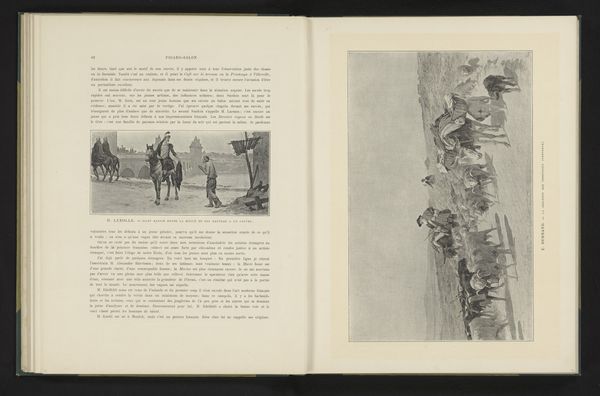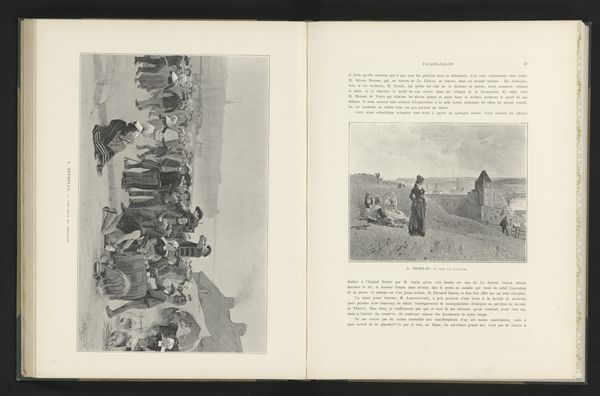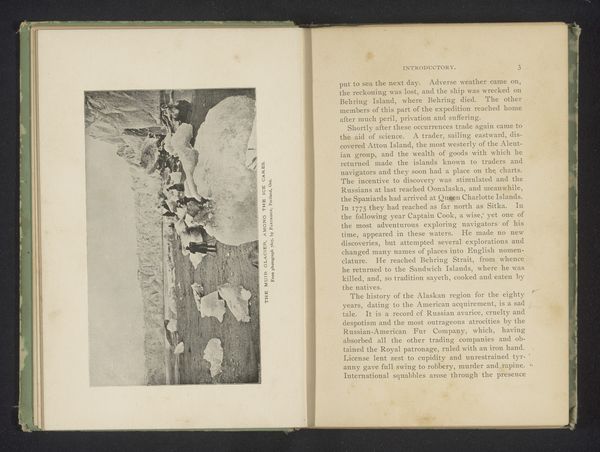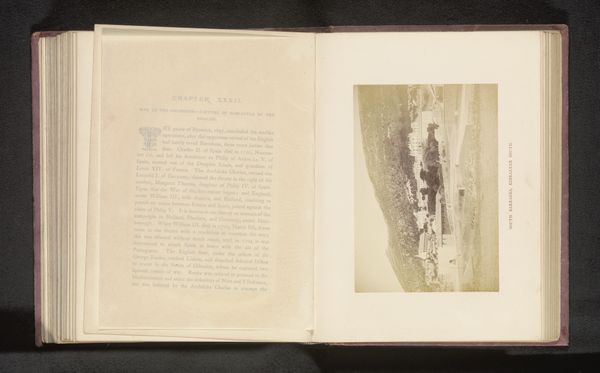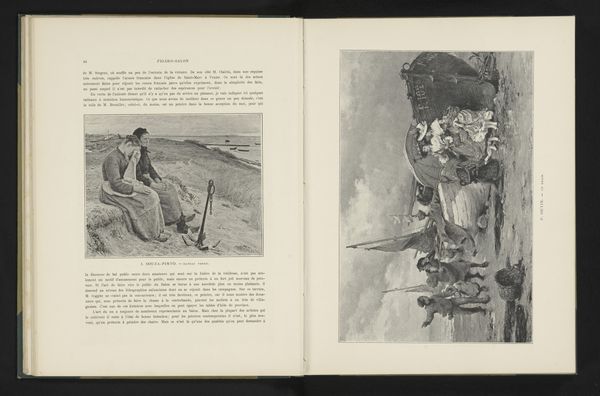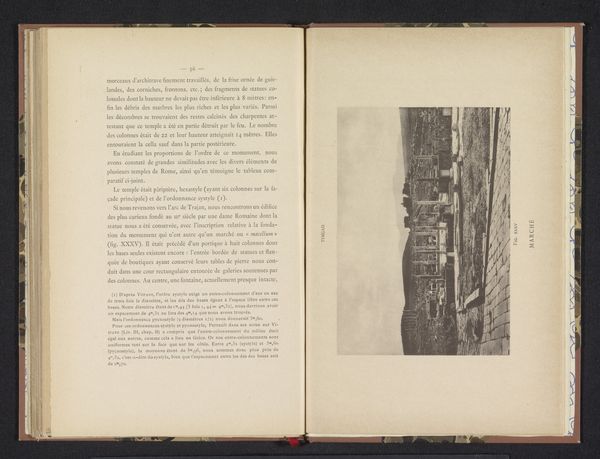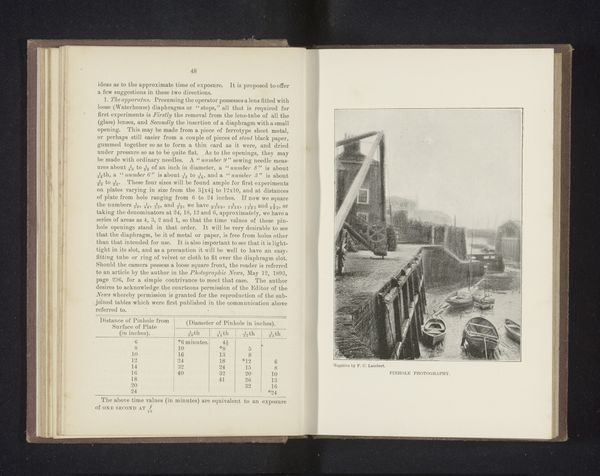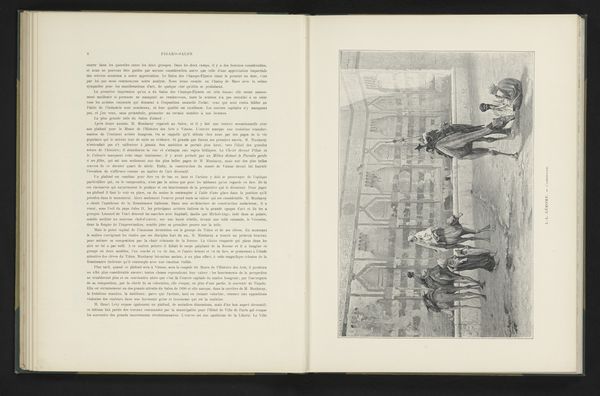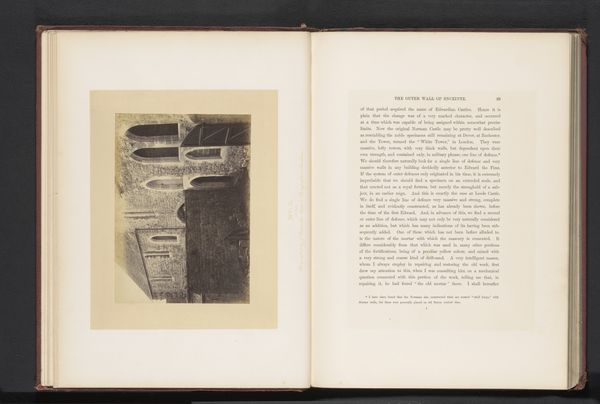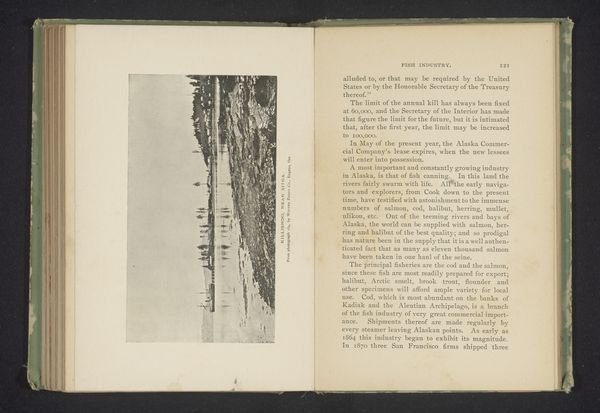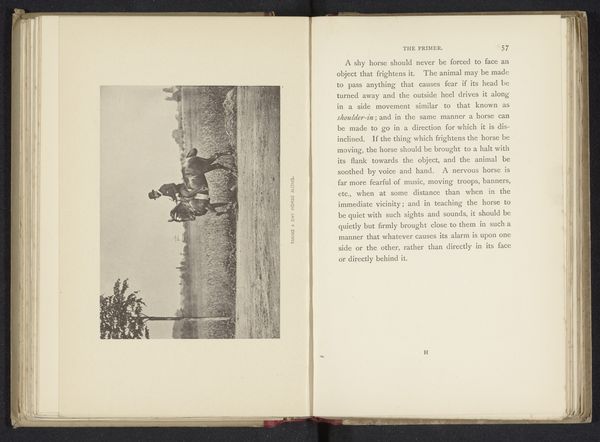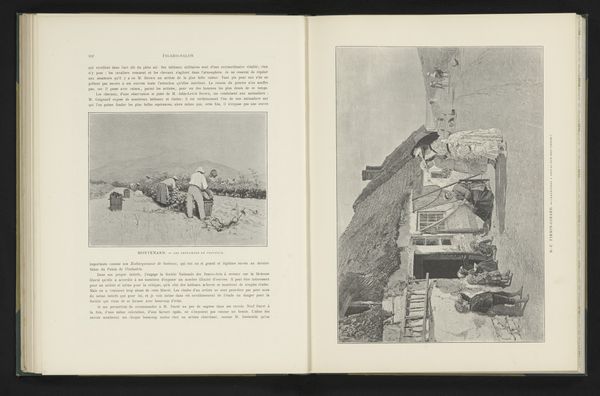
Reproductie van een schilderij van de Franse cavalerie die een Bretonse stad verlaat door Elizabeth Southerden Butler before 1901
0:00
0:00
print, paper, engraving
# print
#
landscape
#
paper
#
cityscape
#
genre-painting
#
history-painting
#
engraving
#
realism
Dimensions: height 223 mm, width 333 mm
Copyright: Rijks Museum: Open Domain
Curator: Wow, there's a real charge of energy in this image. It reminds me of old movie scenes, somehow nostalgic. Editor: Absolutely. What we're looking at here is a reproduction of a painting by Elizabeth Southerden Butler, depicting French cavalry departing a Breton town; we believe it dates from before 1901. It is crafted with engraving on paper, translating an original work of art to a wider audience. What strikes you about it compositionally? Curator: It’s like a controlled frenzy. The movement is all heading outwards, but everyone is strangely composed; the horses, the riders, even the people watching seem dignified even in their enthusiasm. Maybe they just know something terrible is coming... it seems a melancholic parade, with history weighing heavily. What context do you see emerging? Editor: Well, it reflects broader societal anxieties. The scene encapsulates the glorification of military life which frequently obscures its true cost, feeding into imperial ambitions. But even Butler's compositions – lauded for realism – walk a delicate line between glorifying war and acknowledging its disruption. Her attention to detail in rendering soldiers, horses, and civilians reveals a complex relationship with her subject matter. Curator: Hmm, there's definitely that tension between admiring the spectacle of power and critiquing the enterprise that powers it. It's like trying to appreciate the embroidery on a military uniform while questioning what violence the uniform represents. It can all just seem like some awful and tragic theatrical production; beautiful and repulsive, but without resolution. Editor: The lack of resolution seems baked into it. Considering Butler's own position as a woman artist in a male-dominated field—representing these scenes of warfare perhaps enabled her to explore masculine realms. These narratives shape identity, dictate roles and perpetuate or resist power. The print's accessibility enabled Butler's vision, even second-hand, to touch more people with these reflections. Curator: So even this printed copy bears the weight of all those things...it still carries those debates and offers them up for viewing. You know, maybe this slightly-fuzzy print offers another, quieter viewing than the grand gesture of Butler’s paintings: up close, the spectacle feels both close and incredibly distant all at once, as if already fossilized. Editor: In the end, this image underscores art’s fascinating role. Reflecting history while offering a vantage point for interpreting present challenges—something powerful emerges. Thank you for the opportunity.
Comments
No comments
Be the first to comment and join the conversation on the ultimate creative platform.
